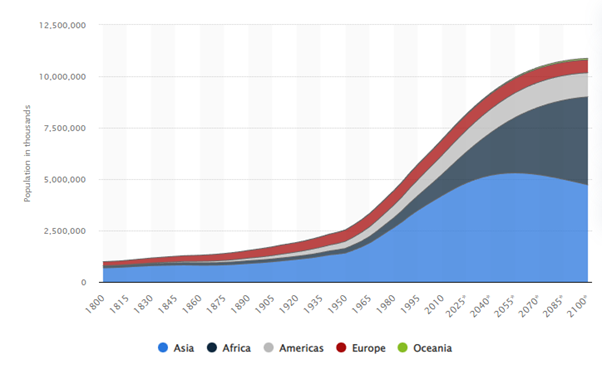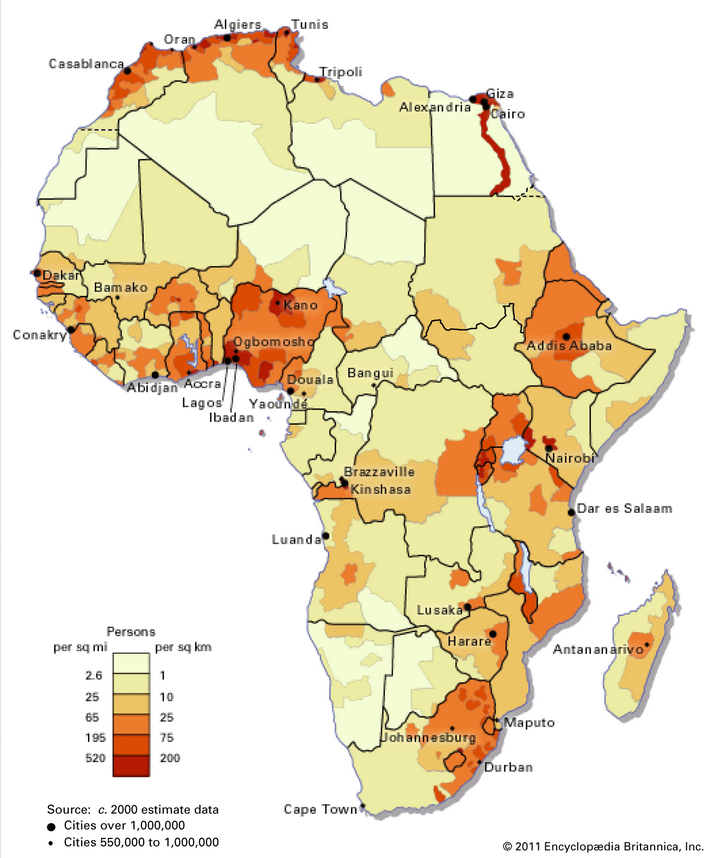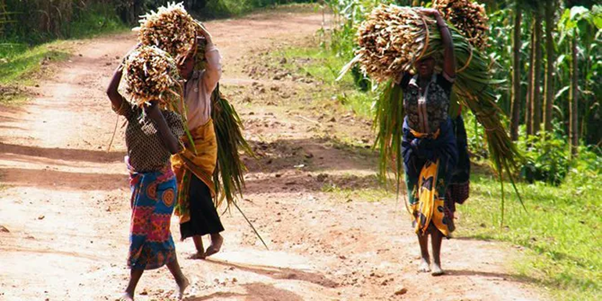The massive demographic challenges in Sub-Saharan Africa
Renewed attention to Africa’s demographics has emerged over the past few years. Its 1.4 billion people make it the second most populated continent on the planet; its median age is the youngest in the world at 18.8 years; and, most notably, Africa has the fastest expanding population of any region in the world. Even though the continent’s death rates are also the world’s highest, its growth of roughly 2.5% a year means that the population will grow by one billion people in the next 30 years.
This is even more impressive when considering global demographic trends, which speak of a steep decline in the birth rate after the remarkable and widespread rise in the late 20th century. While the accelerated growth of the world’s population will decidedly slow down sometime mid-century, Africa will be the last continent to feel the decrease.

African demographics explained
What shapes any population projection is the current population, combined with assumptions and speculations about future trends in fertility, mortality and migration.
Rapid population growth, high fertility rates, low median age, increasing life expectancy, large households and widespread poverty all feature in Africa’s demographics. High fertility rates, in particular, are the driving force in this race, with the highest in the world being in the Sub-Saharan macroregion: 17 out of the top 20 fastest-growing countries by rate are Sub-Saharan countries, including giants like South Sudan, Niger, the Democratic Republic of the Congo, Angola and Senegal. While this rate is slowly declining, its consequences on the demographics will only be felt in a few generations’ time. Furthermore, while infant mortality rates remain high, they show sharp improvement, which partly accounts for the rapidly expanding population and for the youngest population in the world.
Africa is the second-largest continent in the world, and its surface alone accounts for more than one fifth of all land on Earth. However, due to an uneven distribution of habitable land and because colonial borders still persist, population density greatly varies from country to country and even within countries.
Large town settlements were not widespread until the second half of the 20th century. Thus, urbanization is a recent phenomenon, albeit incredibly intense. Large cities have spurred quickly, surfing the wave of in-migration from an impoverished hinterland, for instance, in West Africa.

Challenges ahead – the quest for resources
Rapid population growth inevitably affects human development. World Bank reports confirm that the slow decline of fertility rates in Africa will likely result in a large and young population, with the region becoming a much larger part of the world population.
In fact, Africa’s median age (the index that splits the population evenly on two sides of a given age) is 18.8 years. If we follow UNICEF’s guidelines and define children as any human being underage, this means that 47% of the continent’s population is composed of children. By 2050, one third of the global youth will be Sub-Saharan. This inevitably comes with a number of issues, including access to basic education – which will remain one of the continent’s most pressing challenges for the decades to come.
Another issue with such phenomenal growth is that there might be an increase in the dependency ratio (meaning the number of dependents aged 0 to 14 and over 65, compared with the population aged 15 to 64). As a consequence, countries will have to allocate increasing resources to meet the basic needs of the population that consumes but does not produce. In 2021, the age dependency ratio in Africa was 78%, with child dependency being the overwhelming part. This meant that there were around 78 people aged 0-14 years and 65 years and older, per 100 working-age population aged 15-64 years. In Nigeria – the continent’s most populated country – it was at a staggering 86% in 2021. For comparison, in the EU, the age dependency ratio was 32%.
A rapidly growing population has serious implications for the provision of productive employment. Since it is normally accompanied by a proportionate increase in the supply of the labor force, in a generation’s time governments will need to match this growth with an equal growth in job creation. Currently, however, in an economy that relies heavily on agriculture, the rate of labor force supply has outpaced that of job creation, thus increasing the rates of unemployment. In other words, the number of people seeking employment increases more rapidly than the number of available jobs.
Scarcer access to employment and basic services might also impact migration rates. Simplifying some of the migration trends, one can assume, on the one hand, that if the most developed regions will succeed in managing their own resources and attract the workforce, internal migration might be larger than outward migration. On the other hand, if Europe, North America and (to some extent) Asia will remain the poles of the world development and employment, outward migration could remain high – accompanied by even larger, albeit less often discussed, intra-African migratory flows. On this matter, it is worth noting that a recent study by the European Parliament found that almost 75% of migrants from sub-Saharan Africa remain within the continent: a data driven by recent trends of urbanization that make large cities in Africa very attractive to young labor force. This will become even more relevant as many African countries are looking to develop free-movement areas within the continent.

Looking towards the future
Demographers describe the costs of rapid population growth as cumulative. Generally speaking, while facing large demographic changes, resources such as food supplies and agricultural production must be greatly increased in order to meet the needs of a larger population. If resources are not increased at the same pace, this limits the allocation of additional resources to other economic and social sectors.
In conclusion, countries with the fastest-growing populations will have to adapt their social structures by channeling more resources into welfare to meet the basic needs (food, housing, education) of a younger, initially unproductive population. The effects of the staggering population growth currently projected in Africa translates into greater demands placed on the whole continent and, in particular, on the sub-Saharan governments. If such demands are not met, the consequences will inevitably increase issues of unemployment, underemployment, persistent poverty, urban slums, economic migration and political unrest.
